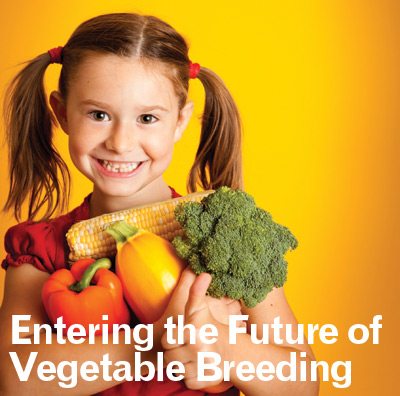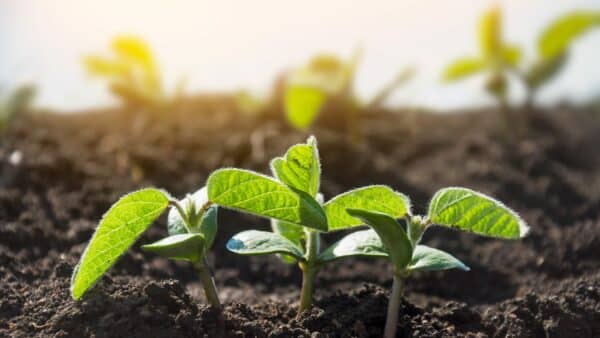New vegetable varieties combine consumer and agronomic benefits.
“It’s a rediscovery of flavor and quality, a desire to reconnect with agriculture and know more about where food comes from and how it was grown,” says Michael Mazourek, professor of plant breeding at Cornell University. “Vegetables are essential for the quality of our nutrition and health. We need to make the most of the present, not disappoint [consumers], and hold their attention as long as we can.”
Seed companies and plant breeders worldwide are trying to live up to this responsibility by working to develop new vegetable varieties that offer benefits to growers, processors, retailers, home gardeners and, increasingly, health-conscious consumers.
“By combining agronomic and consumer traits, we strive to bring more varieties to the marketplace that delight the consumer with their rich flavors and aromas or their enhanced health and nutritional content, while enabling growers to maximize yield and quality potential through naturally introduced pest and disease resistances,” says Andreas Steiner, vegetable crop portfolio head for Syngenta.
The Role of Consumers
Consumer demand for quality, flavor and nutrition has a major influence on the development of new vegetable varieties. “We are trying to learn where there is opportunity in the produce aisle, and how we can integrate that into our breeding,” says Rebecca Catlett, produce chain manager for Nunhems. It’s not always easy for breeders, especially in public breeding programs, to connect with the consumer, although they recognize the need for strong links with end-users. “We try to link with consumers, but there are many layers there,” says Mazourek. “We have been lucky to work with Blue Hill Restaurant at the Stone Barns Center for Food and Agriculture. Chef Dan Barber [the center’s creative director] is able to excite people about new crops and how to use them. Without a link to the consumer like that, it’s hard.”
A good place to start is with flavor, a fact that Johnny’s Selected Seeds knows very well. “Some greenhouse tomatoes don’t always taste as good as other tomatoes,” says Ben Sturtevant, public relations manager for Johnny’s, who claims that the company’s new enhanced flavor tomato, Rebelski AKADRW7749, has as much flavor as other tomatoes. “This is one that we have found which tastes great. It also has a good disease package.”
Let’s Make Veggies Better For You
Nutritionists recommend eating at least seven servings of fruit and vegetables every day to stay healthy. Consumers are increasingly embracing this message, especially in the developed world, where problems of obesity and food-related health issues are stimulating growth in the healthy snacks market.
“People around the globe are paying more attention to the health and nutritional value of the food they consume,” says Steiner. “Making healthy food more convenient is another driver in the increased consumption of healthy food like vegetables. Pre-prepared or fresh-cut fruit and vegetables and snacking items enable consumers to enjoy healthy food without the hassle and time required to prepare a meal.”
To serve this growing demand, Syngenta recently introduced a snacking tomato called Angelle, which has higher flavonoid and lycopene (a powerful antioxidant) content than comparable varieties.
Many breeders are trying to improve the nutrition of vegetables to increase their health benefits. “Secondary metabolites such as flavonoids greatly influence the quality and health potential of food and food products,” says Steiner. “There is evidence that antioxidants like lycopene have positive effects against coronary heart disease and certain types of cancers.”
But providing increased nutritional or other health benefits is not an easy or inexpensive task. “In terms of increasing nutrition you [need to] achieve perhaps a 100 percent, 200 percent or 1,000 percent increase in nutrient content for it to be significant for daily health,” says Autar Mattoo, a plant physiologist with the USDA Agricultural Research Service.
Mattoo believes that significant nutritional improvements will not be available to the industry until it’s willing to fully embrace biotechnology. Case-in-point is a transgenic tomato developed by Mattoo and Avtar Handa, a professor of horticulture at Purdue University, which stays fresh longer by the addition of a yeast gene that slows aging. They have also “Conventional breeding has never accomplished that.” developed a tomato which produces 300 percent more lycopene. So far, however, these products have not been commercialized. Biotechnology is a path that most industry players are cautious about taking, largely due to consumer resistance to genetically modified foods in large export markets such as Europe and Japan.
Focusing on Agronomic Performance
Maximized yields have always been important to the profitability of growers and their customers, but today other considerations are also at play. “Yield is important for Heinz in meeting our sustainability goals,” says Rich Ozminkowski, manager of agricultural research at HeinzSeed. “We are trying to produce more tomatoes with fewer inputs on less ground, so we can maximise the crop and make it more profitable for growers to produce.”
As a member of a farmer-owned cooperative, Harris Moran Seed Company’s focus is very much on delivering varieties that have the characteristics to meet growers’ needs. “We work closely with growers to determine what is going to entice them to buy our product over someone else’s,” says Amanda Stellhorn, communications manager at Harris Moran. “We really take into account what their needs are.”
Some grower concerns include qualities such as disease resistance, pest and weed control and drought tolerance, especially in a year that has brought weather-related challenges to farmers from California to Calcutta. Although biotechnology has helped provide solutions for some of these issues in crops like corn and soybeans, for the most part, breeders still use traditional methods to find ways to make vegetable crops easier to grow, harvest and store.
Not that the science of genetics isn’t playing an important role in plant breeding. Heinz is increasingly building upon molecular marker development to enhance its breeding program. “It allows us to access some of the vast amount of genetic data that is already out there, and use molecular markers to supplement our traditional cross-breeding and selection methods to help us be more efficient in advancing new varieties,” says Ozminkowski.
One of those new varieties, which will be released for semi-commercial, large-scale trials in 2012, is H1175, a high- yielding variety which has the added advantage of Extended Field Storage (EFS), a characteristic which makes it resistant to rot and which improves the ability of the ripening fruit to remain in the field without deteriorating in quality.
Ozminkowski says that around a million tons of tomatoes were at risk from late rains and a delayed harvest in California this season, but the addition of EFS to some varieties saved a large portion of the crop from rotting in the fields. “That’s where EFS was a real advantage,” says Ozminkowski. “Where growers had varieties with EFS, it allowed harvesting to go on for a month longer than usual.”
Resisting Disease
Finding ways to keep ahead of evolving plant diseases is a priority for plant breeders around the globe. A good example is the clubroot resistant trait TopRes, which was developed by Syngenta scientists through traditional breeding methods over 18 years. “In Europe, varieties containing the Syngenta TopRes trait allow for the continued production of high quality and high yielding brassica crops
in clubroot-infected areas, where growing such crops would no longer be financially viable for growers without the trait,” says Steiner.
At Cornell University, Mazourek is working on the development of peppers that are resistant to Phytophthora capsici blight, a fungus-like pathogen which attacks peppers and cucurbits that are resistant to downy mildew. Both diseases are aggressive and hard to control chemically and are also evolving, and having devastating effects across the United States and globally.
Tomato blight is an ongoing problem for tomato growers and has been particularly problematic over the past couple of years. Last year, Johnny’s introduced its Defiant PHR tomato variety, which was bred for disease resistance against late blight. This year, the variety is also available in an organic version.
Appearance Is Everything
Presentation of vegetables is important for fresh produce retailers and the food service industry to help them gain an advantage in a highly competitive market. A vegetable’s appearance can be an important selling feature. As a result, appearance is a driver behind the development of all kinds of novel varieties, from grape tomatoes to multicolored “greens” such as Kaleidoscope Mix Flower Sprouts, new and exclusive to Johnny’s, which is a cross between Brussels sprouts and kale. The result is a nutritionally-enhanced vegetable with purple, green and bi-coloured sprouts that look like mini heads of lettuce.
Nunhems has developed a variety of multi-leaf lettuce, to be launched this year through River Ranch, which stays fresher longer and doesn’t wilt on the plate, which is equally important to retailers, the food service industry and the bagged lunch brigade.
Squash, which already comes in an array of colors, textures and shapes, is also getting an overhaul in response to consumer appetites for foods that are visually interesting. This is the reason why Johnny’s is offering Jester, an acorn-style winter squash with a yellow, green-ribbed skin that sets it apart from the usual green-skinned varieties. “We are trying to get our customers interested in trying new things to increase their own customer reach,” says Sturtevant.
Easy and efficient vegetable preparation is important to both processors and time-pressed consumers. Nunhems’ Intense Tomato spills less juice when cut, and thus keeps bread dry when used in a sandwich and saves on clean-up.
Whatever the drivers behind new vegetable varieties, diversity is key to a robust food system, says Mazourek. “The seed industry, [in combination] with public research and grower-breeder-seed savers, is a great balanced system,” he says. “The tenuous part of this system is keeping support for public plant breeders a priority when less than two percent of us are farmers. We need to work at helping the other 98 percent understand what we do and how it relates to their daily needs.”
Angela Lovell











